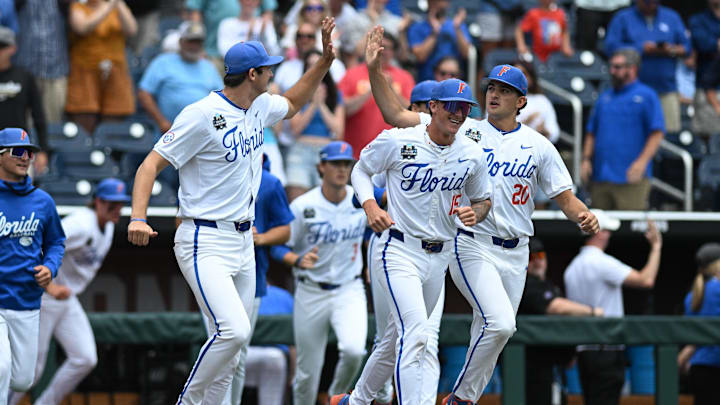Imagine a wild, sprawling showdown where 64 college baseball teams slug it out for a shot at immortality in Omaha. That’s the NCAA Division I Baseball Tournament—a chaotic, thrilling gauntlet that mixes double-elimination drama with best-of-three nail-biters, all leading to the grand stage of the Men’s College World Series (MCWS). If you’re new to this rodeo or just need a refresher, let’s dive into how this beast works, from the gritty regionals to the crowning of a national champ.
The Tournament Breakdown: Regionals and Super Regionals
It all kicks off in late May or early June with 16 regionals—think of them as mini-tournaments scattered across the country, each hosted by a top-tier team. Picture 64 squads split into these 16 pods, with four teams per regional, seeded 1 through 4. The No. 1 seeds? They’re the big dogs, often the top 16 national seeds handpicked by the NCAA Division I Baseball Committee.
These regionals are double-elimination affairs, meaning you’ve got to lose twice to get the boot. A team could go 3-0 and cruise through, or claw back from a loss with a 4-1 run—either way, only one squad per regional survives the carnage. The home team is the highest ranked team in the pod, so having a national seed is very important.
After the dust settles, you’re left with 16 winners, and that’s where the eight super regionals come in. These are no-nonsense, best-of-three series that pair up the regional champs in a bracket-style showdown. The matchups follow a 1 vs. 16, 2 vs. 15 (and so on) logic, assuming the top seeds hold serve. The higher seed hosts, and it’s win two games or go home.
Played over a weekend in June, these series are pure adrenaline—think extra-inning walk-offs, clutch homers, and pitchers gutting it out on short rest. Eight teams emerge, battered but victorious, ready for the big dance.
The Road to the College World Series
Those eight super regional champs punch their tickets to Omaha, Nebraska, for the Men’s College World Series, held at Charles Schwab Field. This is the pinnacle, where legends are forged over two weeks in mid-to-late June. The eight teams split into two four-team brackets, and it’s back to double-elimination rules—lose twice, and you’re toast.
Each bracket grinds down to one survivor, setting up a best-of-three MCWS Finals to crown the national champion. It’s a marathon that tests everything: depth, resilience, and a little luck. A team can drop as many as four games across the whole tournament and still hoist the trophy—talk about a rollercoaster.
The National Ranking System: Who Gets In and Who’s Top Dog?
So, how do these 64 teams get picked, and who snags those coveted national seeds? It’s a mix of merit and mayhem. Since 1954, the field’s been split into two groups: automatic berths (30 conference champs, often tournament winners) and at-large bids (34 teams chosen by the committee).
The selection process is unveiled on a tense Selection Show in late May, aired on the ESPN family of networks. The committee leans on the Rating Percentage Index (RPI)—a stat-heavy brew of win percentage, opponents’ strength, and road performance—to rank teams and slot them into the field.
The top 16 teams earn national seeds, a golden ticket that guarantees they host a regional (and a super regional if they advance). These seeds aren’t just bragging rights—they’re a massive edge, letting powerhouses like Tennessee, LSU, or Florida play at home with raucous crowds in their corner.
From 1999 to 2017, only the top eight were seeded nationally; since 2018, it’s expanded to 16, giving us a clearer pecking order. The No. 1 overall seed—like Tennessee in 2024—gets the prime spot, paired against the No. 16 seed’s regional winner in the super regional round, and so forth. But here’s the kicker: upsets happen. A No. 4 regional seed (think a 13 or 14 seed in basketball) like Fresno State in 2008 can storm through and win it all, proving rankings only get you so far.
Why It’s a Blast
This setup’s a beast—64 teams, 16 regionals, eight super regionals, and an eight-team Omaha finale. It’s quirky, intense, and wide open, with mid-majors like Coastal Carolina (2016) crashing the party alongside giants like USC (12 titles).
The double-elimination twists and best-of-three climaxes keep every pitch electric. Whether you’re cheering a national seed or a Cinderella, the NCAA Baseball Tournament delivers chaos, heart, and a shot at history. Next stop: Omaha. Who’s got what it takes?
